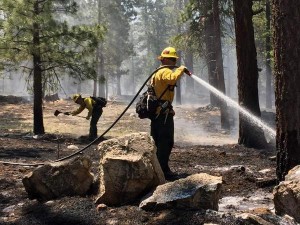
Ten years of Landsat imagery was analyzed to determine the average and range of vegetation index values for each pixel across the region. These values were correlated with measures of herbaceous cover and biomass to determine loading of fine fuels. A process was then developed to create current year fuel loads using pre-fire season imagery, capturing the green-up of herbaceous vegetation across the region.
Using the current year fuel loads, changes in fire behavior fuel models data are made that reflect the current fire season fuel loads. Modeling exercises have been used to evaluate the seasonal fuel model data and local fuels experts have provided review of the process and resultant data with great enthusiasm for these new products. These data will be available on the LANDFIRE data distribution site later this fall and complete documentation will be available on the LANDFIRE Program website.

Be Part of What’s Next: Emerging Applications of Landsat at AGU24
Anyone making innovative use of Landsat data to meet societal needs today and during coming decades is encouraged to submit and abstract for the upcoming “Emerging Science Applications of Landsat” session at AGU24.





